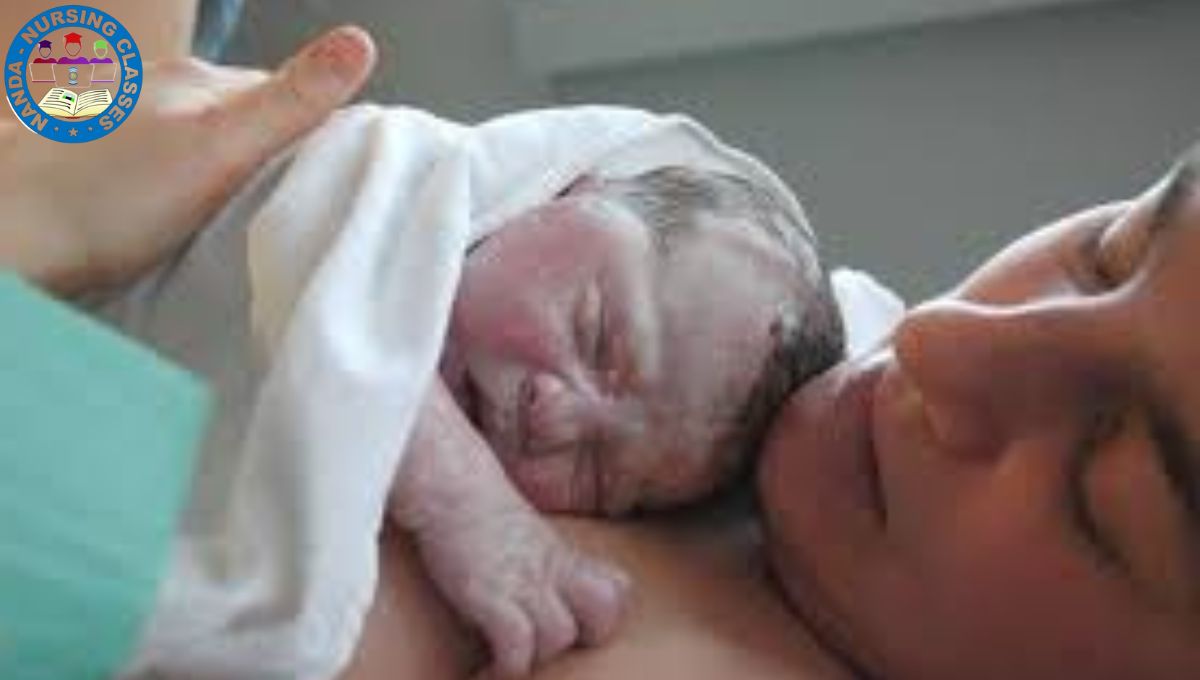Kangaroo Mother Care (KMC) is a globally recognized, evidence-based method of nurturing preterm and low birth weight babies through continuous skin-to-skin contact, exclusive breastfeeding, and close follow-up care. Developed as a cost-effective alternative to incubators, KMC not only supports the physical growth of fragile infants but also strengthens the emotional bond between parents and their babies. This compassionate and natural approach has transformed neonatal care, particularly in resource-limited settings, by providing warmth, nutrition, and protection against infections.
In this post, we will explore the principles, benefits, and practical implementation of KMC, highlighting its role in enhancing infant survival and family well-being.
Kangaroo Mother Care Definition
Kangaroo Mother Care (KMC) is a method of care for preterm or low birth weight (LBW) infants that involves skin-to-skin contact, exclusive breastfeeding, and early discharge with proper follow-up. It is a cost-effective and natural alternative to conventional neonatal care.
Components of KMC
- Skin-to-Skin Contact
- The infant is placed in an upright position on the mother’s chest (or the caregiver’s chest).
- Provides warmth and facilitates bonding.
- Exclusive Breastfeeding
- Encourages direct breastfeeding or expressed breast milk.
- Enhances nutrition and immune support for the infant.
- Early Discharge with Follow-Up
- Promotes early home care with regular health monitoring.
Kangaroo Mother Care Indications
- Preterm infants (born before 37 weeks of gestation).
- Low birth weight infants (less than 2.5 kg).
- Stable infants with no severe complications.
Kangaroo Mother Care Benefits
- For the Infant:
- Promotes thermoregulation.
- Reduces risk of infections.
- Improves weight gain and growth.
- Enhances breastfeeding success.
- Stabilizes heart rate, oxygen saturation, and respiratory rate.
- For the Mother:
- Strengthens emotional bonding.
- Increases breastfeeding confidence and milk production.
- Reduces stress and postpartum depression.
- For Healthcare Systems:
- Cost-effective alternative to incubators.
- Reduces hospital stay duration.
Kangaroo Mother Care Procedure
- Preparation:
- Educate the mother/caregiver about KMC.
- Ensure privacy and comfort.
- Positioning the Baby:
- Baby is dressed only in a diaper and cap.
- Placed upright between the mother’s breasts, directly on her skin.
- Secured with a wrap, cloth, or specially designed KMC shirt.
- Duration:
- Continuous skin-to-skin contact is ideal for at least 2-3 hours per session.
- Should be maintained as long as possible daily.
- Monitoring:
- Check for baby’s temperature, feeding patterns, and overall well-being.
- Provide lactation support if needed.
Nursing Responsibilities in Kangaroo Mother Care
- Educate parents on the importance of KMC.
- Assist in initiating KMC and demonstrate correct positioning.
- Monitor the baby’s vital signs, weight, and feeding.
- Provide emotional support to the mother and family.
- Ensure proper follow-up care after discharge.
Kangaroo Mother Care Challenges
- Cultural beliefs and lack of awareness.
- Reluctance from caregivers.
- Lack of privacy in some healthcare settings.
Conclusion
Kangaroo Mother Care is an effective and simple intervention that significantly improves outcomes for preterm and low birth weight infants. Nurses play a crucial role in educating, supporting, and guiding families to implement KMC successfully.
FAQs about Kangaroo Mother Care
1. What is Kangaroo Mother Care (KMC)?
KMC involves holding a diaper-clad baby against a parent’s bare chest, promoting skin-to-skin contact. This practice helps regulate the baby’s body temperature, heart rate, and breathing, and fosters bonding.
2. When should KMC be initiated?
KMC can be started as soon as the mother and baby are stable after birth. It’s particularly beneficial for preterm or low birth weight infants and should be initiated in a healthcare setting and continued at home.
3. How long should each KMC session last?
Sessions should last at least one hour to maximize benefits, but longer durations are encouraged as long as both mother and baby are comfortable. Frequent sessions throughout the day are recommended.
4. Can fathers or other family members provide KMC?
Yes, while mothers are primary providers, fathers and other family members can also participate in KMC, offering additional bonding opportunities and support.
5. Is KMC safe for babies on medical support like CPAP?
KMC can be practiced with babies receiving medical support, such as Continuous Positive Airway Pressure (CPAP). However, it’s essential to consult healthcare providers to ensure safety and proper monitoring.
6. What should I do if my baby shows signs of discomfort during KMC?
If your baby exhibits signs like persistent crying, changes in breathing, or temperature instability during KMC, discontinue the session and consult a healthcare professional immediately.
7. Can I practice KMC if I’m unwell?
If you have a contagious illness, it’s advisable to refrain from KMC to prevent transmitting infections to your baby. A healthy family member can provide KMC during this time.
8. Does KMC replace the need for incubators?
While KMC offers many benefits, it doesn’t entirely replace the need for incubators, especially for extremely preterm infants requiring intensive medical care. KMC can complement medical treatments and should be integrated as advised by healthcare providers.
9. How does KMC benefit breastfeeding?
KMC promotes exclusive breastfeeding by enhancing milk production and facilitating easier breastfeeding sessions due to the close physical proximity between mother and baby.
10. Are there any risks associated with KMC?
KMC is generally safe when practiced correctly. However, improper positioning can lead to respiratory issues or falls. It’s crucial to receive proper guidance from healthcare professionals to ensure safety.

